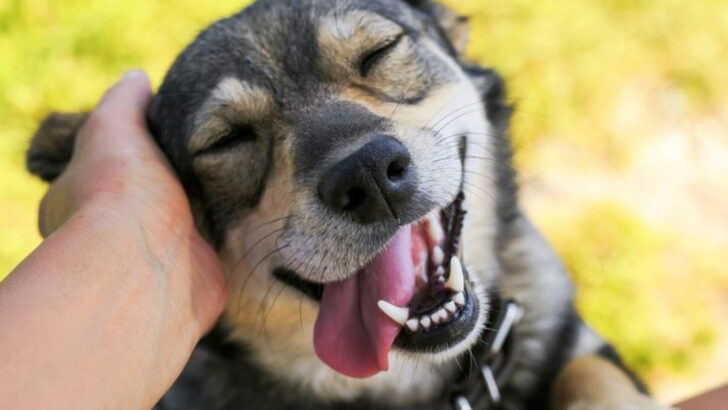Your dog doesn’t need to wag its tail off to tell you it’s happy. Forget the obvious. True canine contentment hides in the little things— the soft sigh before a nap, the calm glance that lingers just a moment longer, the way they lean against you when words aren’t needed. Happiness in dogs isn’t always loud. It’s subtle. It’s quiet. It’s deeply felt. If you’ve ever wondered what’s going on behind those soulful eyes, you’re not alone. There are signs your dog is trying to share, but most humans miss them entirely. Until now. Let’s decode the silent language of joy— because your dog might be feeling better than you ever realized.
Contented Tail Wagging

A dog’s tail can be a window into their emotions. A gentle, side-to-side wag often signifies contentment and relaxation. Unlike the frantic wagging seen during playtime, this motion is calm and measured. When you see your dog wagging their tail like this, it may mean they feel safe and happy in their environment.
Observe the context and surroundings when they display this behavior. Contented tail wagging is usually accompanied by a soft gaze and relaxed ears. It reflects an inner peace, letting you know your furry friend is at ease.
Cherish these moments as they reveal a truly happy pet.
Relaxed Body Language
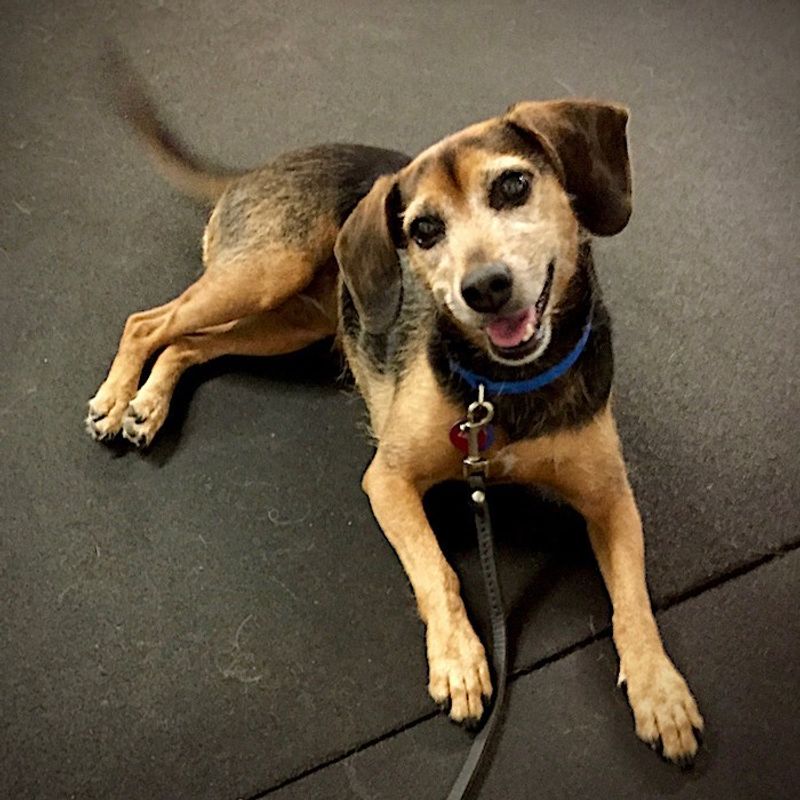
Relaxed body language is a clear indicator of a dog’s happiness and security. When your dog feels at ease, they’ll often lie on their back with paws up, exposing their belly—a sign of trust.
Look for loose, wiggly movements and a soft gaze. These signs suggest your pet feels safe within their surroundings. A happy dog will not show signs of tension, such as a tucked tail or stiff limbs.
This openness and trust are foundational to their contentment, reflecting a deep bond between you and your furry companion.
Playful Behavior
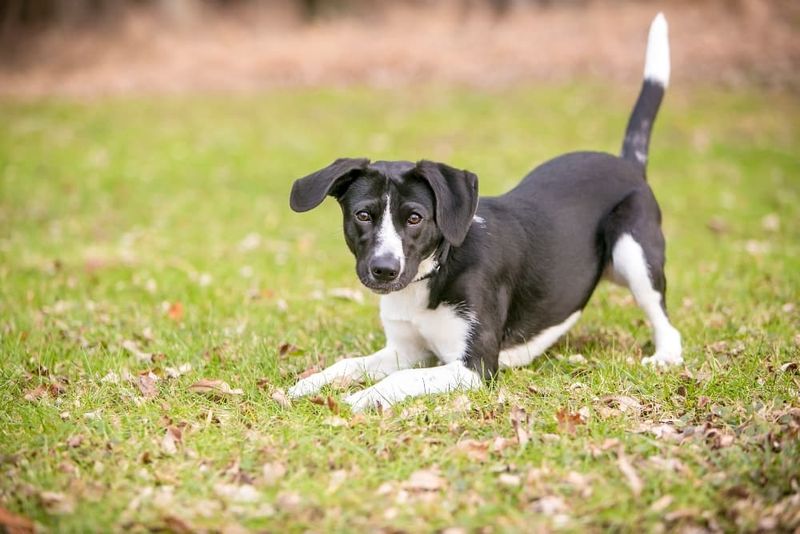
Playful behavior in dogs is a joyous expression of their happiness and well-being. When a dog initiates play, whether with a toy or a playful bow, it’s a sign they’re feeling good and want to engage with you.
Playfulness can include bouncing around, fetching, or even a mischievous game of chase. This behavior not only indicates their happiness but also contributes to their physical and mental health.
Encouraging these moments strengthens your bond and ensures your dog continues to feel loved and secure in their environment.
Soft Eye Contact
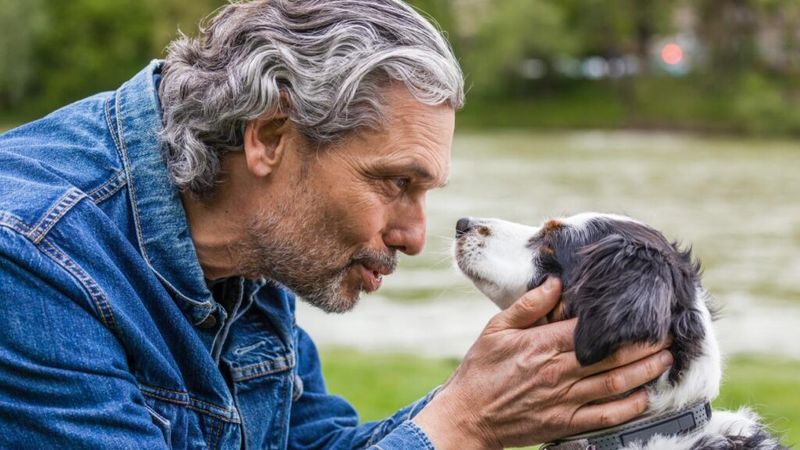
Soft eye contact is a subtle yet powerful sign of a dog’s happiness and affection. When your dog looks at you with gentle eyes, often combined with a slow blink, it signifies trust and love.
This form of communication is their way of expressing how much they cherish your presence. It contrasts with a hard stare, which can indicate stress or anxiety.
Enjoy these tender moments, as they reveal a deep connection and a happy, secure pet. Responding with a smile or gentle touch reinforces the positivity of these exchanges.
Healthy Appetite
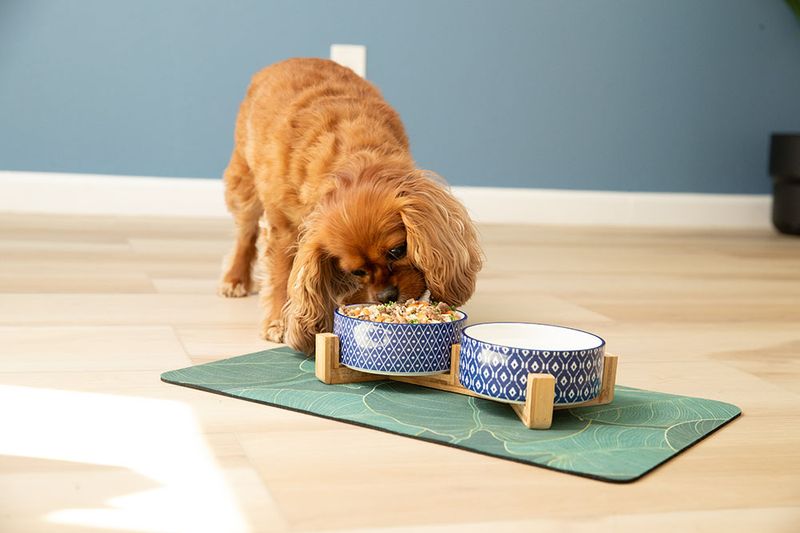
A healthy appetite is generally a good indicator of a dog’s well-being. When your dog eats with enthusiasm, it typically means they are feeling good both physically and mentally.
Dogs who are happy usually approach their meals with eagerness, and their eating habits remain consistent. A sudden disinterest in food can sometimes signal stress or health issues.
Monitoring your dog’s appetite helps ensure they maintain a balanced diet, contributing to their overall happiness. Celebrate their zest for food as a reflection of their contentment and health.
Engagement in Training
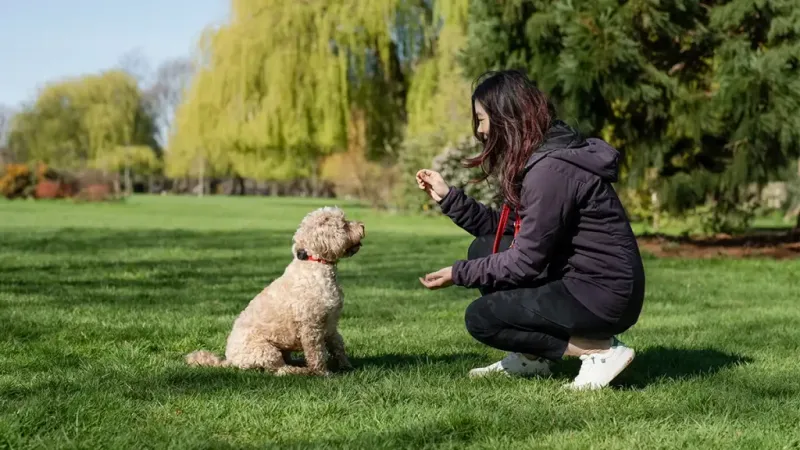
Engagement in training is a positive sign of a dog’s happiness and mental stimulation. When your dog participates willingly and responds to commands with enthusiasm, it demonstrates their eagerness to please and learn.
Training sessions that are fun and rewarding help build a strong relationship between you and your pet. This engagement reflects their intellectual stimulation and emotional well-being.
A happy dog is one that enjoys the challenges and rewards of training, finding joy in the interaction and learning process.
Calm Sleep
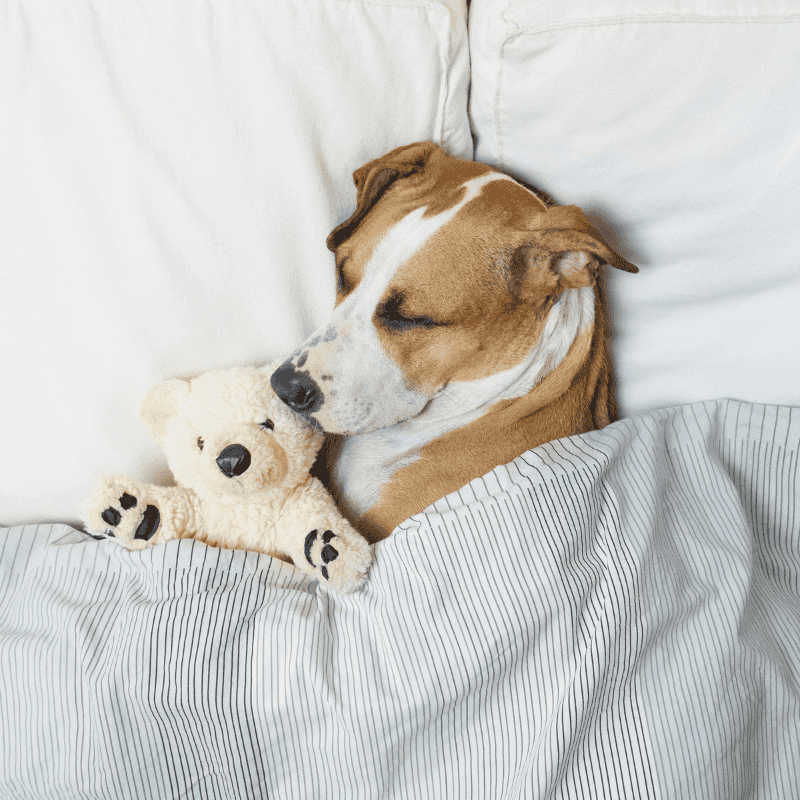
Calm sleep is a vital sign of a dog’s happiness and sense of security. A content dog will sleep soundly without interruptions, indicating they feel safe in their environment.
Observe their sleeping position; a dog that is sprawled out or curled up comfortably is likely at peace.
Consistent, restful sleep is crucial for their health and happiness, and it reflects the trust they have in their surroundings. Providing a comfortable sleeping area can enhance their rest and ensure they wake up refreshed and happy.
Affectionate Behavior
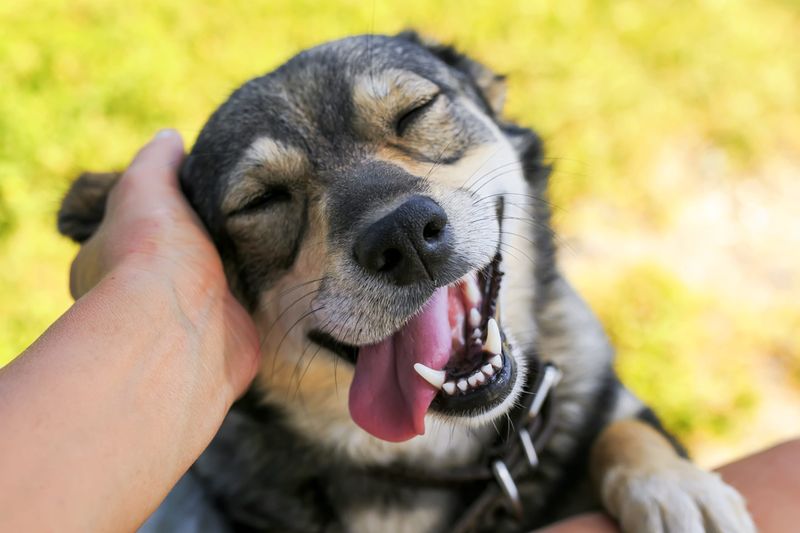
Affectionate behavior is a heartwarming sign of a dog’s happiness and attachment to their human companions. When your dog seeks out physical contact, such as nuzzling or leaning against you, it’s a clear indication of their love and trust.
These affectionate gestures demonstrate their comfort and satisfaction in the relationship you share. Such behavior not only boosts their own happiness but also strengthens the bond you have with them.
Cherish these loving moments, as they are a testament to your dog’s contentment and secure attachment.
Curiosity and Exploration
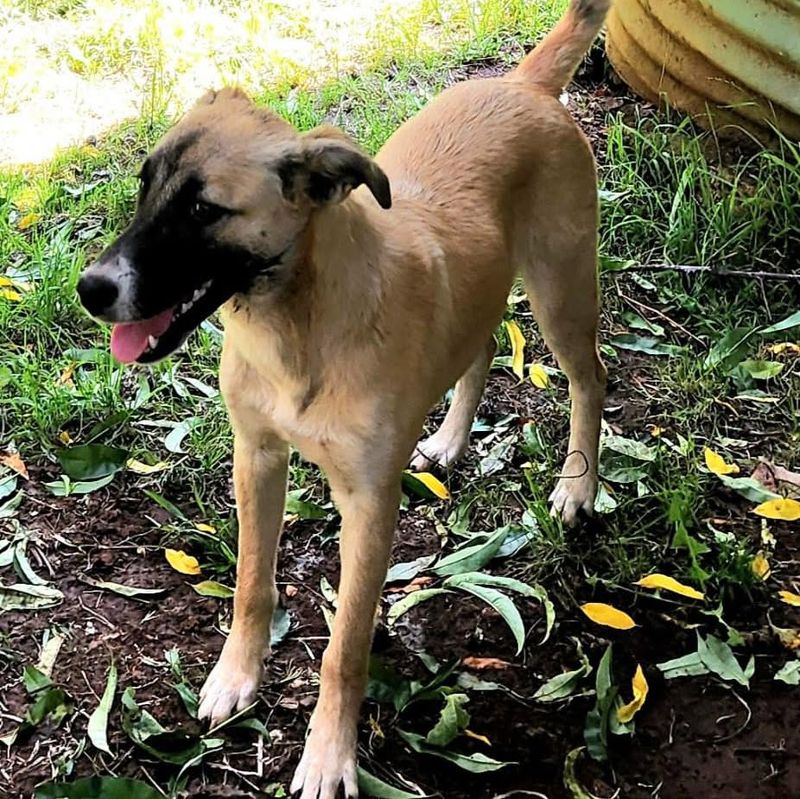
Curiosity and exploration are signs of a happy, mentally stimulated dog. When your dog shows interest in their surroundings, sniffing and exploring with enthusiasm, it indicates they feel secure and confident.
This inquisitive behavior is essential for their mental health, providing them with new experiences and learning opportunities.
Encouraging exploration, whether through walks or play, enhances their happiness and keeps their mind active. A curious dog is a happy dog, thriving in a stimulating and safe environment.
Happy Greetings

Happy greetings are a delightful expression of a dog’s love and excitement to see you. When your dog greets you with a wagging tail, wiggling body, and maybe a few joyful barks, it’s a sign they cherish your presence.
These enthusiastic welcomes reflect their happiness and the strong bond you share. It’s an opportunity for them to express their affection and eagerness to be with you.
Returning their joy with your own warmth and attention reinforces this positive interaction and strengthens your relationship.
Comfortable Alone Time

Comfortable alone time is an indication of a dog’s confidence and well-being. A happy dog can spend time by themselves without showing signs of stress or anxiety.
When your dog is content to relax alone, perhaps snuggling with a favorite toy, they demonstrate their independence and security in their environment.
Providing them with a safe space and comforting items supports this behavior, ensuring they feel happy and confident even in solitude. This balance in their behavior is a sign of a well-adjusted and content pet.
Friendly with Other Dogs
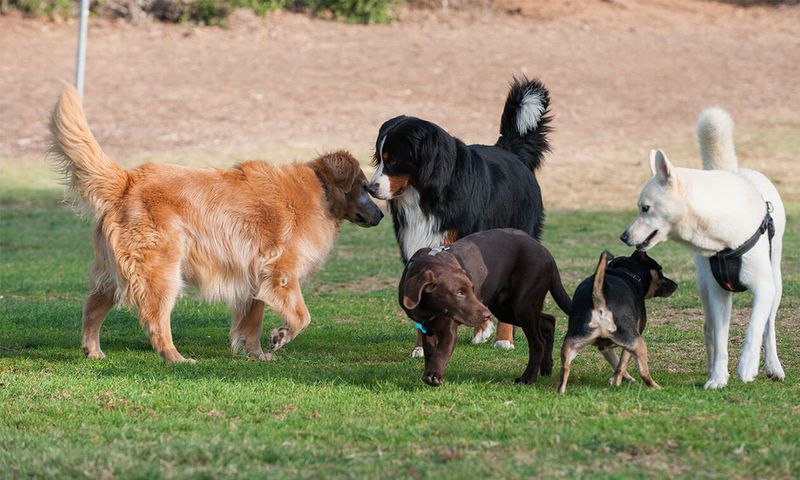
Friendliness with other dogs is a positive sign of a happy, well-socialized pet. When your dog interacts with other dogs, showing playful and respectful behavior, it indicates they feel secure and confident.
Such social interactions are important for their emotional well-being, providing opportunities for exercise and mental stimulation.
Encouraging positive encounters with other dogs helps build their social skills and enhances their happiness. A friendly dog is generally a content dog, thriving in both human and canine company.

